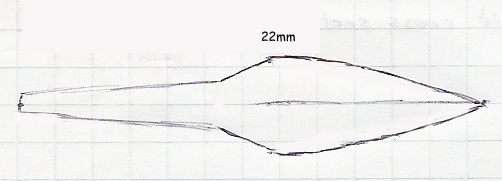As I had mentioned, I was focusing on the available starting metal bars in this project so far. (If you are wondering, this is why the stock sizes are given as Imperial, the finished measurements in Metric.) I had chosen a generic spear point shape, which as you can see in Neil's research is well a well represented type.
Of course a Norse blacksmith would not be purchasing his metal as modern mild steel industrial lengths. In the period, raw metal was purchased (from the iron smelter) as fairly standard 'currency bars' - roughly 2 x 2 cm by 40 cm or so long. So for one of the working series, I chose to use a block of antique wrought iron. This material is salvaged from a bridge originally built about 1850 (and is wonderful, consistent material to work with by the way).
 | Provenience: Kjølstad, Sør-Odal, Hedmark, Norway, c. 10th c. Museum: Universitetets Oldsaksamling, C37550 f,g,h Length: 12.5 cm |
The replica, forged from antique wrought iron. |  |
Showing the individual forging steps:
 |  |
| Drawing out one end of wrought iron billet. | Bar is cut off, its end pointed, the first rough bevel. |
 |  |
| Shoulder in. | Cut from bar, start on tang. |
 |  |
| Tang is drawn and tapered. | Finish profiling bevel, straighten. |




















No comments:
Post a Comment